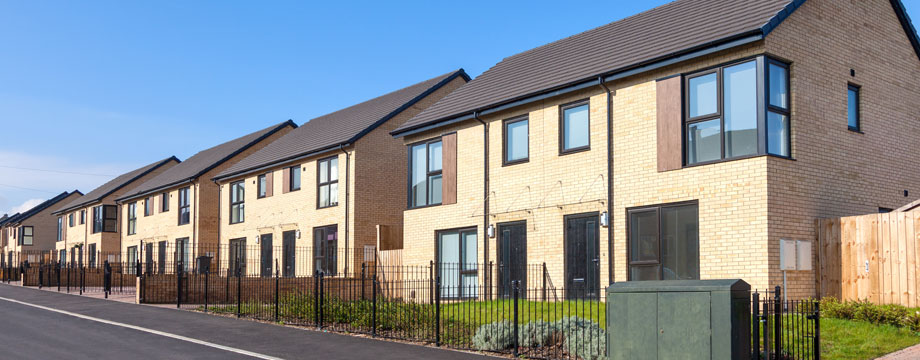George Clarke explores the contradictions in government housing policy

So, the government has published a new, draft National Model Design Code (NMDC) to ‘bring back beauty’ to the way new-build homes and estates are built across the country.
Following on from the ‘Building Better Building Beautiful Commission’ that published its report in January 2020, the government has since appointed URBED, a design and research company based in Manchester, to produce a checklist of design principles to consider for new developments covering everything from urban design to street character, facades, building types, environmental design and well-being.
This is all part of the government’s ambition to overhaul the planning system, improve housing delivery and raise standards of design across the country.
Who would argue, in principle, against any of these points?
But, the success or failure of a National Model Design Code will very much depend on the legislation government brings in following other work it has commissioned.
We have the government’s White Paper ‘Planning for the Future’ published in august 2020, which has proven to be very controversial, certainly when it comes to permitted development rights.
There are also proposed changes to the National Planning Policy Framework (NPPF) which places a huge emphasis on the use of ‘guides and codes’.
A testing time
So, the new National Model Design Code (NMDC) is going to be tested across 14 areas in England, where councils are being given £50,000 to set out new design principles for new development in local areas.
They will take part in a 6-month testing programme to apply the NMDC in their area and “Help Britain Build Back Better, by making sure current and new residents alike will benefit from beautiful homes in well-designed neighbourhoods”.
This is ambitious stuff straight off the government website! Although some of the content they published did make me laugh...such as “local design codes will be expected to enhance the character of the local area” (well let’s hope so...I don’t think we want to bring in a design code that will ruin the character of the local area) and then it says “for example by using honey-coloured stone in the Cotswolds or red brick in the Midlands”.
... REALLY? I’m sure local planners know about using local materials already! I’d be really worried if they didn’t!
Beauty is in the eye of the beholder
This is where it all starts falling apart for me.
I completely acknowledge that it’s brilliant the word ‘Beauty’ is now being used extensively by the government when it talks about housing.
It hasn’t been used for many, many decades in parliament and I’m pleased it’s made a comeback.
But, when it comes to design, what one person thinks is beautiful may be very different to another person!
Of course, having a checklist of a few general design rules to set out what most people believe is the right thing to do in a particular location (like using local materials) is good, it’s also pretty obvious and surely planners are doing this already.
It is also fantastic that Government has an ambition to raise design standards and improve the quality of what we build across the country, but they also want all of this to be done ‘affordably’ and they want it ‘fast’ and here lies a big problem.
Contradictory requirements
I’ve been saying since I qualified as an architect that there are 3 fundamental things we have to juggle when we are designing a building. QUALITY, TIME, and COST.
Nearly every client wants a high-quality build, they want the project as fast as possible and they also want it cheap. Simply not possible!
• You can’t build high quality, fast and cheap.
• You can build high-quality and fast, but it will often be expensive.
• You can build fast and cheaply, but more often than not that will result in a low-quality product.
If you want quality design at a relatively low price then that will often require far more design time to get the best value for money, so it will take longer.
This is where the government are all over the place and tie themselves in knots. They are a bag of contradictions.
They want to build fast to meet their ambitious housing targets, so they introduce things like Permitted Development Rights to bypass the planning system, but that has massively reduced design standards and produced some awful housing in the last few years.
They say they want local authorities to determine design standards and engage and consult with local communities so they are fully involved in the development of their local area.
Great! But, to do that takes time and money.
Councils need more planning resources, which is virtually impossible when their budgets have been slashed, and real, genuine community consultation takes time and costs money too.

Even more contradictions
The government want to push up design standards and they want us to have zero-carbon housing by 2050.
High-design standards and high levels of ecological design costs more money than homes of low standards and poor environmental design.
High quality, truly sustainable design is a long-term investment that takes time.
But let’s be honest, governments only think from one parliament to the next and they don’t want to be responsible for increased building costs or slowing down the big house builders.
Even the contradiction of announcing a ‘NATIONAL model design code’ but wanting the councils to determine ‘LOCAL design principles’ isn’t lost on me.
Powerful house builders
So, the government want high-quality, they want zero-carbon, they want it to be affordable and they want it all by tomorrow.
That’s not going happen. Certainly not when the Government are fully dependent on a group of very big, very powerful house builders to meet their ambitious targets – who often want less red-tape, less planning and want to build at the lowest price possible for maximum profit, because for them a home is a product and a financial commodity.
Grand announcements are easy. Commissioning report after report with wonderful phrases like ‘Build Better Build Beautiful’ and ‘Britain Build Back Better’ aren’t particularly difficult to write and might provide a beacon of positive hope in a housing market that is fundamentally broken.
But if those reports and announcements are unrealistic and simply cannot be delivered because the housing market is about money and not codes, then everyone just feels let down.
Genuinely broken
Of course every local planner wants high quality development that is appropriate for their local area (at least I hope they do) and I’m sure the general public also want really good quality, genuinely affordable homes for their children and grandchildren and their local communities.
And I’m sure everyone wants those homes to look great in many years to come, have much needed local amenities around them, have considered, well-designed car parking schemes, safe green spaces for their kids to play, and for those homes to be as environmental and as low-carbon as possible with minimal running costs.
So, we all know what is right and where we want to get to...the problem is the system is genuinely broken.
The combination of staggeringly over-inflated house prices, the inflated cost of land, the overall short-term approach to housing, the lack of high-quality constructions skills, an industry based on building fast and for maximum profit, and government housing policies that are inconsistent and change with the weather, means we just can’t get to where we all know we want to be and I’m afraid a few new design codes isn’t going to change that.
- Log in to post comments













